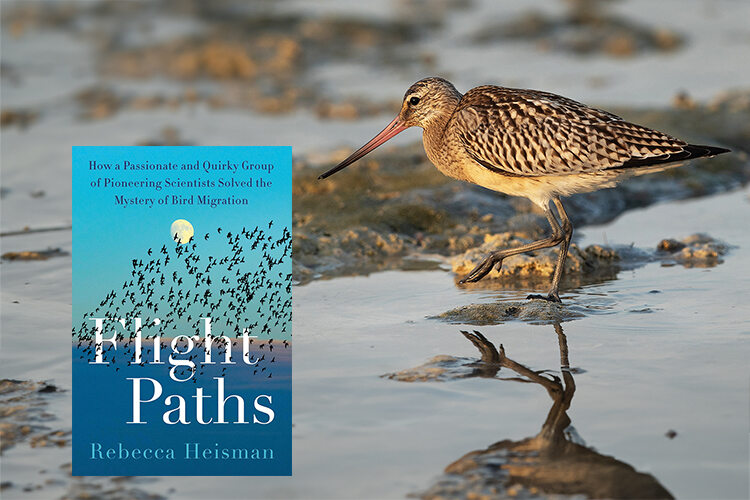
Rebecca Heisman presents an engaging and unashamedly focused book on the intricate science behind migratory bird tracking
Review by Chris Fitch
Two centuries ago, an unlucky stork was shot by a hunter in Germany. Embedded in its neck was a long, thin piece of wood – unmistakably a spear. Later analysis revealed it to be African in origin.
The Pfeilstorch (‘arrow stork’) was the first definitive evidence that European birds don’t hibernate during winter, they don’t transform into other species, nor do they make the arduous flight to the Moon, all of which were genuine theories at the time. Instead, they migrate, often hundreds and thousands of kilometres, to various parts of the planet.
Even in the 21st century, these journeys have an aura of the unbelievable about them. Take the famous bar-tailed godwit codenamed E7. Implanted with a transmitter in New Zealand, this shorebird was tracked flying north along the coasts of Asia. After a month-long breeding period in Alaska, E7 embarked on a remarkable 11,200-kilometre return journey across the open waters of the Pacific Ocean.
Ever-improving technology has been critical in revealing the extent of these dramatic migrations. Early techniques such as rudimentary colour banding, or tracking flocks that disrupted military and weather radars, yielded transformative results, but lacked detail. Recent technology has changed the game again, such as the capacity for citizen scientists to use apps such as iNaturalist and eBird to report their own bird sightings.
Flight Paths is unashamedly focused on one very niche topic. The intricate science behind the evolution in migratory bird tracking, is, you might think, one just for diehard twitchers. But Heisman has an engaging writing style and an obvious passion for the topic, without being personally so deep into the science as to be unable to explain it in simple terms. Several first-hand accounts bring a sense of immediacy to the narrative.
Furthermore, as both the quantity and quality of data in this field increases, and the precise paths and destinations of different migratory species become ever clearer, so do the threats they face. Understanding why certain bird species are in decline becomes much easier when you can track their migration crossing an especially perilous bottleneck, or identify crucial feeding grounds being converted to agribusiness. The survival of billions of endangered birds may depend on our deeper understanding of these incredible flight paths.




